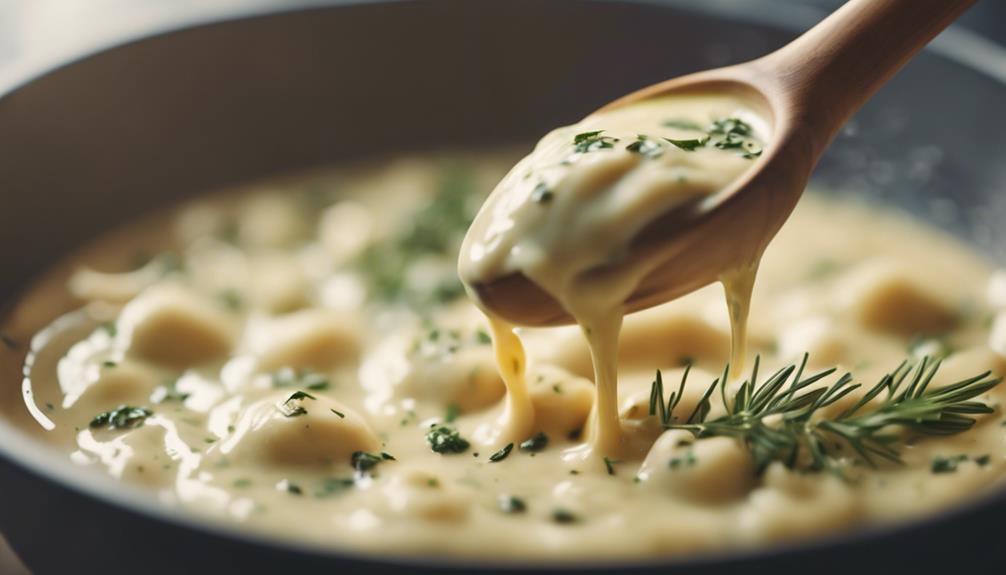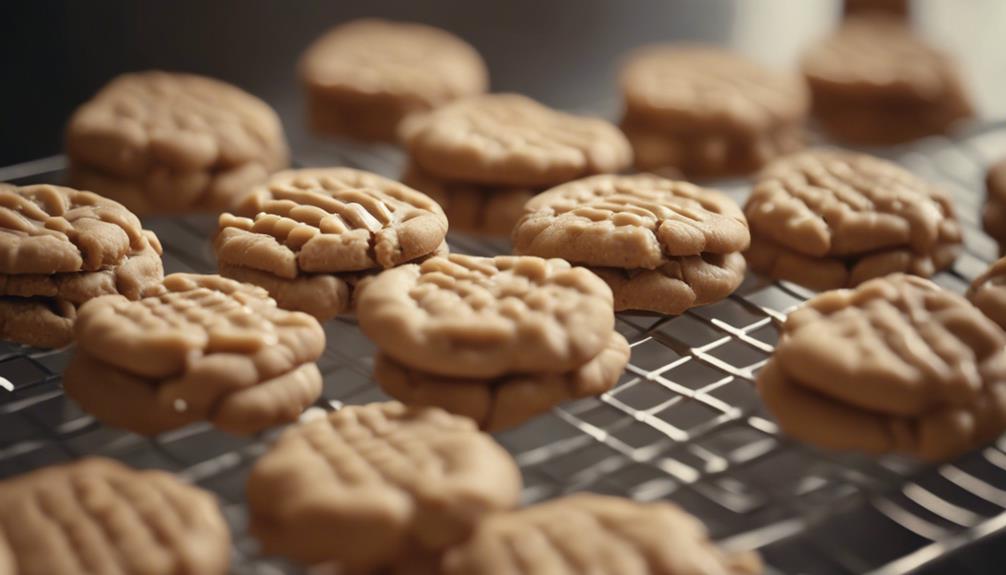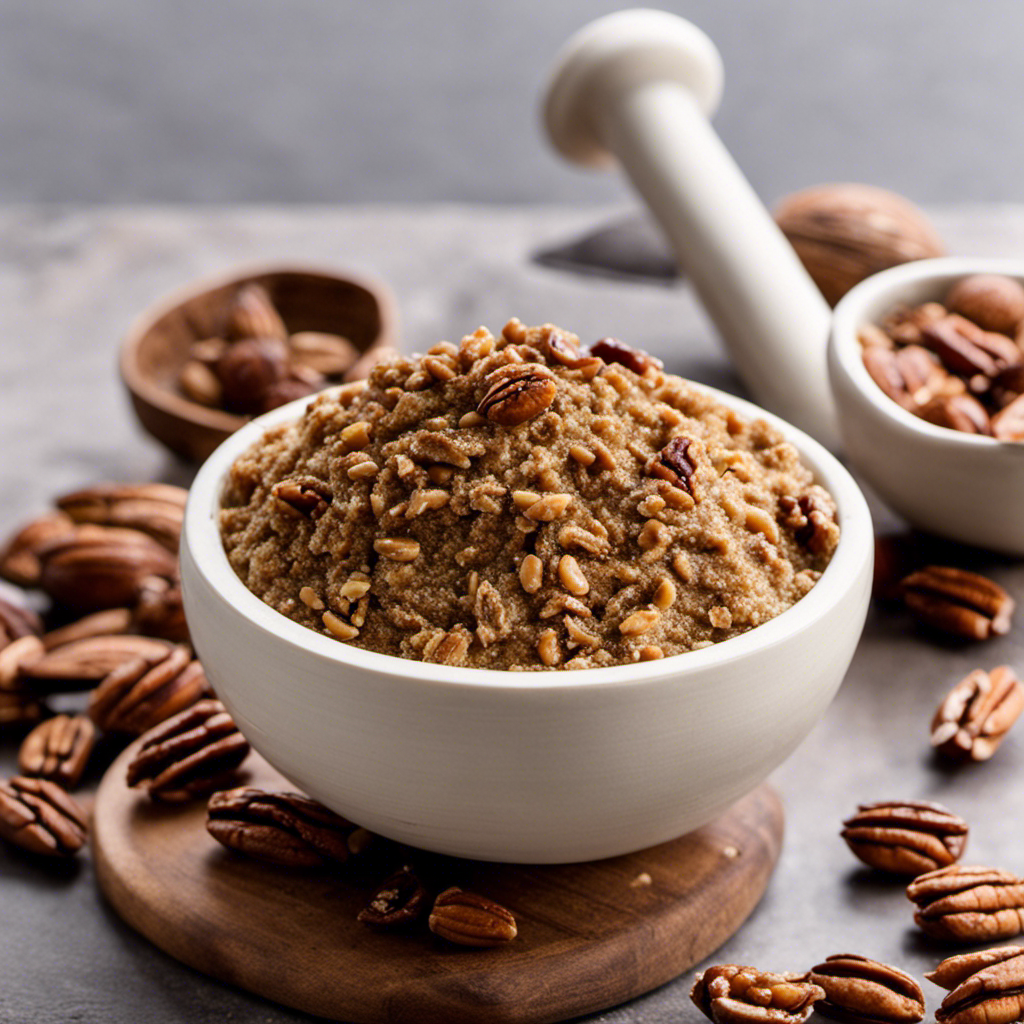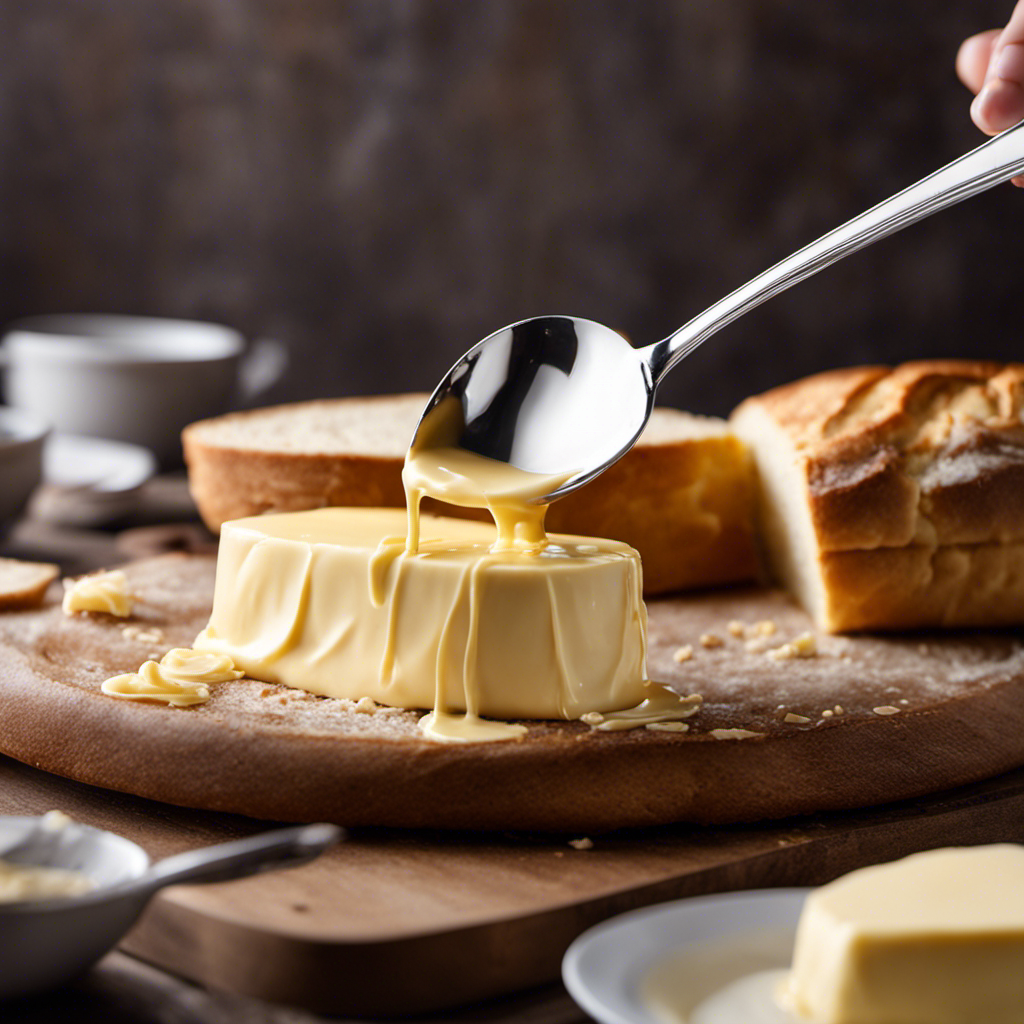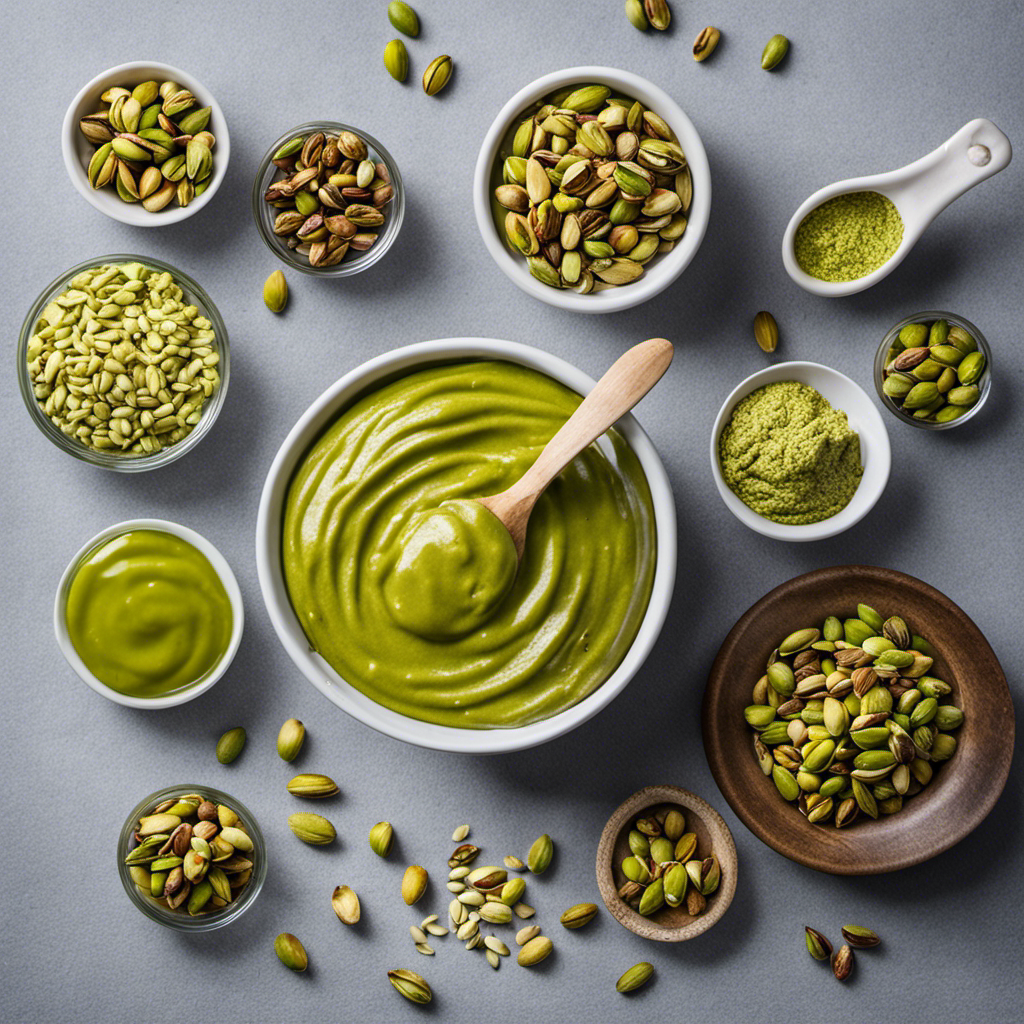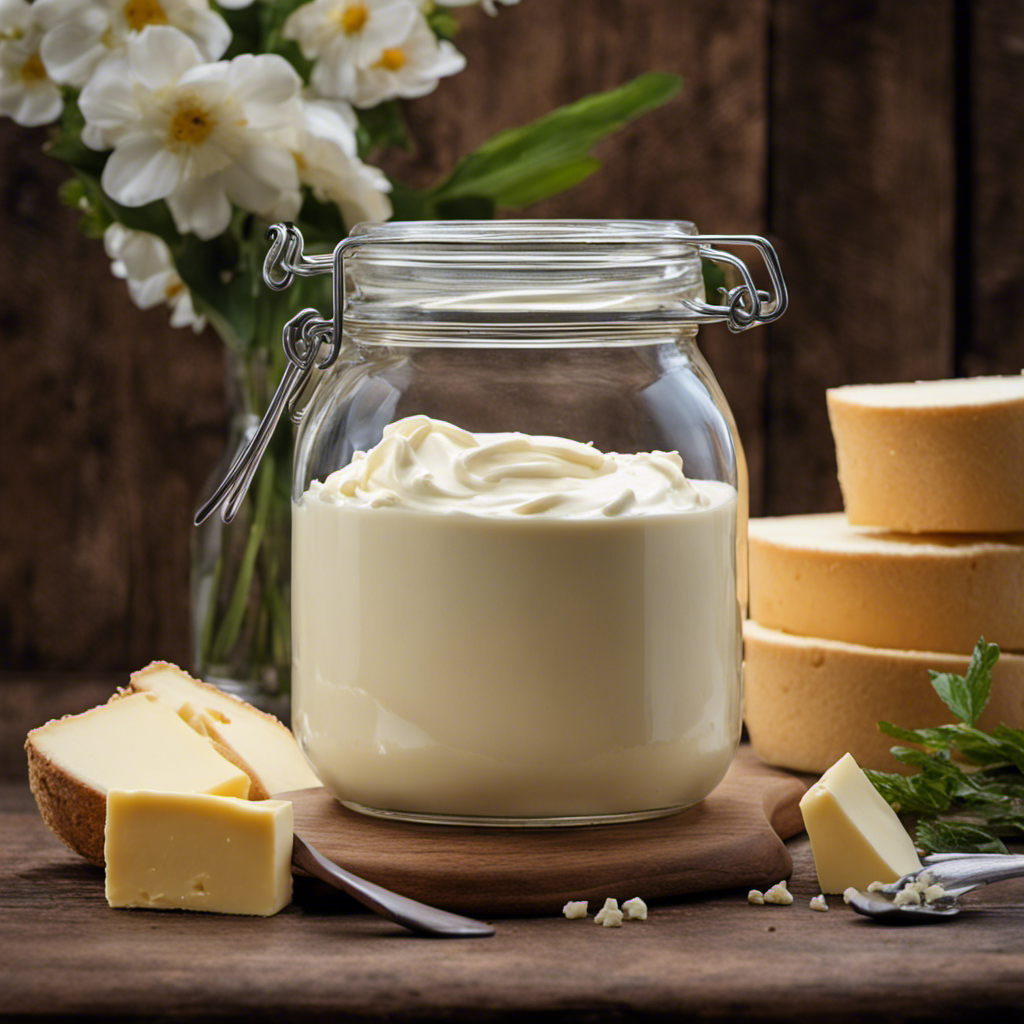Elevate your dishes with our ultimate garlic butter! Blend softened butter, fresh garlic, herbs, salt, and pepper. Adjust ingredients for tailored taste. Enhance garlic bread, steaks, pasta, and more. Freeze portions for easy access. Need more tips on flavor variations and quality ingredients?
Key Takeaways
- Blend softened butter with garlic, herbs, salt, and pepper for a flavorful base.
- Customize garlic butter by adjusting garlic and herb quantities for personalized taste.
- Enhance a variety of dishes like bread, steaks, pasta, rice, and potatoes.
- Store garlic butter in airtight containers in the fridge for up to a week or freeze for longer shelf life.
- Freeze garlic butter in portions for easy access, lasting up to three months.
Garlic Butter Ingredients
For your flavorful garlic butter, gather unsalted butter, fresh garlic, herbs such as parsley or chives, salt, and pepper. The star of this savory combination is garlic, infusing the butter with its distinct aroma and taste. Using fresh garlic cloves is ideal for the best flavor, but in a pinch, garlic powder can be a suitable substitute. When substituting fresh garlic with garlic powder, the general rule is to use approximately 1/8 teaspoon of garlic powder for every garlic clove.
Fresh ingredients like minced garlic and herbs provide a more vibrant and robust taste to your garlic butter. The flexibility to adjust the amount of garlic and herbs allows you to tailor the intensity of flavor according to your preferences. Additionally, experimenting with different herbs and seasonings can help you create a customized garlic butter that perfectly complements a variety of dishes.
Making Garlic Butter
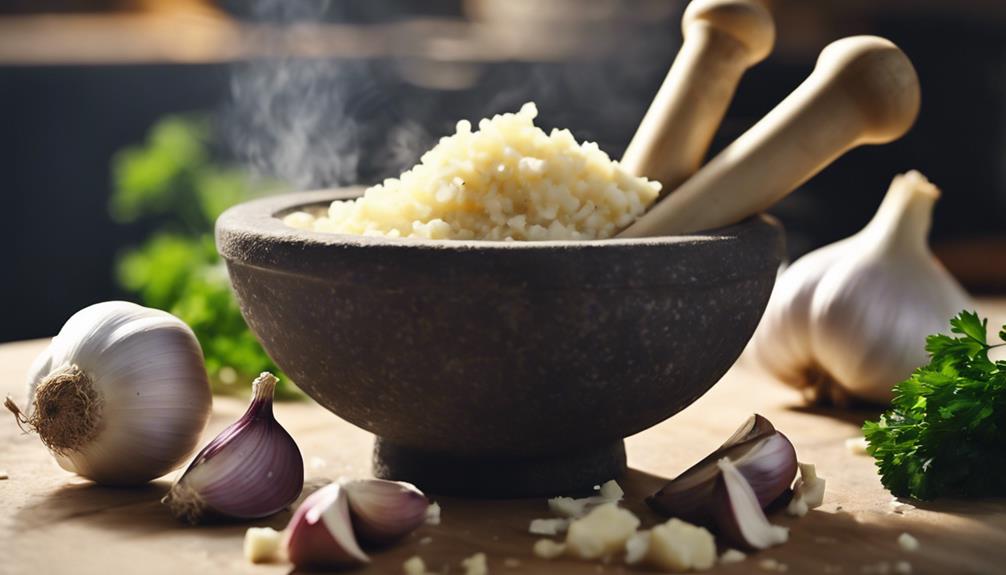
To make garlic butter, blend softened butter with minced garlic, herbs, and seasonings for a flavorful spread. Start by ensuring your butter is at room temperature for easy mixing.
If you prefer convenience, you can substitute fresh garlic cloves with garlic powder in your garlic butter recipe. This versatile spread can be stored in the refrigerator for up to a week or frozen for longer shelf life.
To achieve a smooth and creamy consistency, consider using a food processor or electric hand mixer when making your garlic butter. Experiment with different herb and seasoning combinations to customize your garlic butter to suit various dishes.
The process of making garlic butter is simple and allows you to elevate the flavors of your favorite meals effortlessly. Try making a batch of garlic butter to have on hand for a quick flavor boost whenever you need it.
Using Garlic Butter
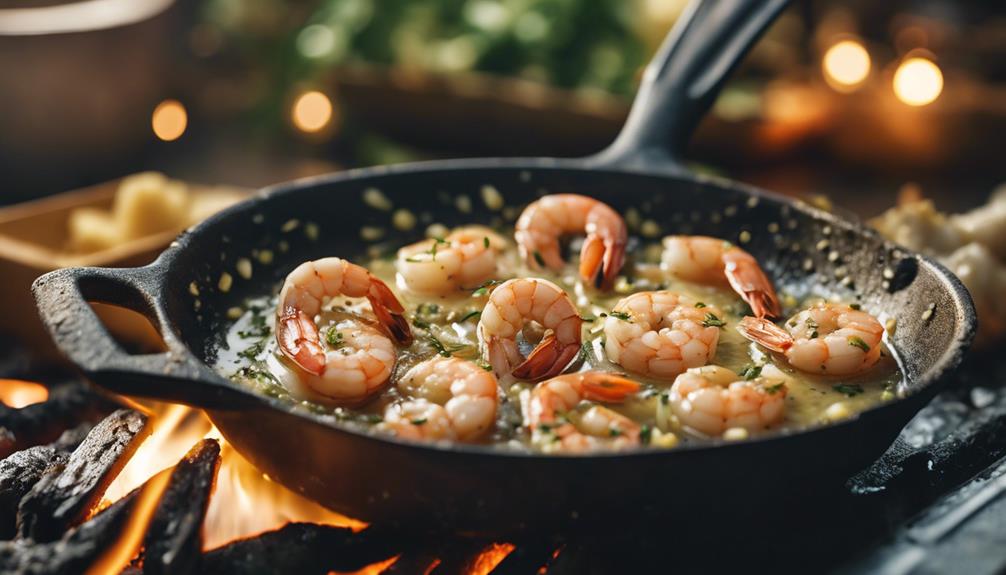
Enhance the flavors of your favorite dishes by incorporating garlic butter, a versatile spread that adds a delicious twist to various recipes.
Whether you're making garlic bread, steaks, pasta, rice, or potatoes, garlic butter can take your dishes to the next level. For an extra pop of flavor, consider adding fresh parsley and black pepper to your garlic butter mixture. These additions will elevate the taste profile and provide a burst of freshness.
Try using garlic butter in recipes like Lazy Chicken Parmesan Grilled Cheese or to make Brioche Croutons for a gourmet touch. The possibilities are endless when it comes to incorporating garlic butter into your cooking. Its rich, savory flavor can complement a wide variety of dishes, making it a must-have in your culinary arsenal.
Experiment with different dishes and cooking methods to discover the full potential of garlic butter in enhancing the taste of your meals.
Making Ahead and Storage
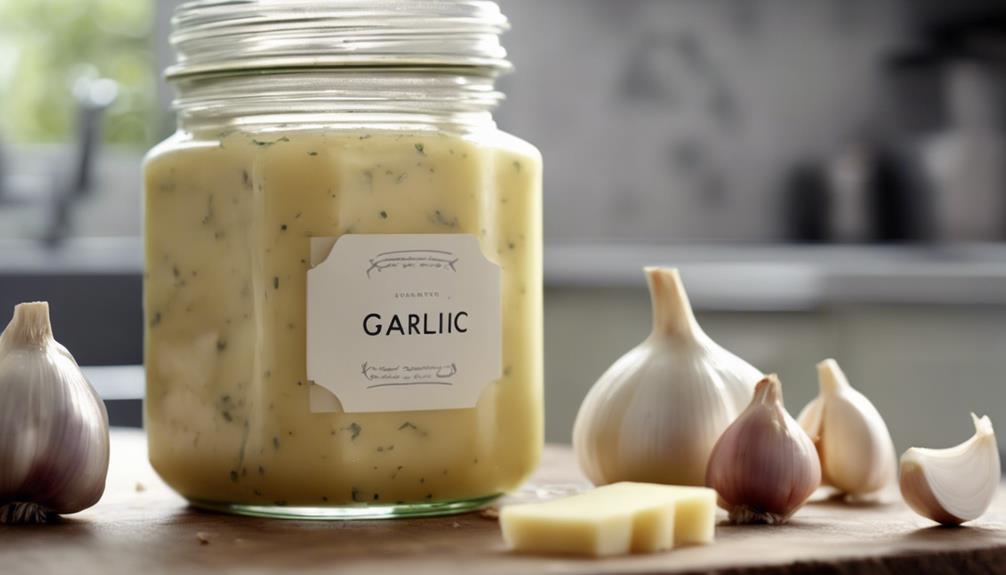
You can prepare your garlic butter in advance, which allows you to enjoy its delicious flavor whenever needed.
Storing it in the refrigerator for up to a week or freezing it for longer periods guarantees you always have some on hand.
Following these storage tips will help you keep your garlic butter fresh and ready to enhance your dishes.
Storage Tips
Consider preparing your garlic butter ahead of time to save time and effort when cooking.
To store your homemade garlic butter, make sure you place it in an airtight container to maintain its freshness and flavor. For refrigeration, opt for shallow containers, while ice cube trays work well for freezing individual portions.
Remember to label and date your frozen garlic butter for easy identification and usage.
When storing garlic butter with freshly grated Parmesan cheese, be cautious as cheese tends to deteriorate faster.
In the refrigerator, your garlic butter can last up to one week, while in the freezer, it can be stored for up to three months.
Freezing Guidelines
To prepare your garlic butter ahead of time for future use, follow these freezing guidelines for convenient storage and easy access.
When freezing garlic butter, divide it into portions and place them in containers or ice cube trays. This method allows you to grab just the right amount needed for your recipes without thawing the entire batch.
Garlic butter can be stored in the freezer for up to three months while still maintaining its rich flavor. Properly stored garlic butter retains its quality and is versatile for use in various dishes like pasta, seafood, and vegetables.
By following specific freezing guidelines, you make sure that your garlic butter stays fresh and ready to enhance the taste of your favorite meals whenever you need it.
Freezing Garlic Butter

Freezing garlic butter is a simple way to prolong its freshness and flavor for up to three months.
When freezing garlic butter, dividing it into containers or ice cube trays before placing it in the freezer is crucial. This technique not only assists with portion control but also makes it convenient to grab just the right amount for your recipes without having to thaw the entire batch.
Recipe Variations
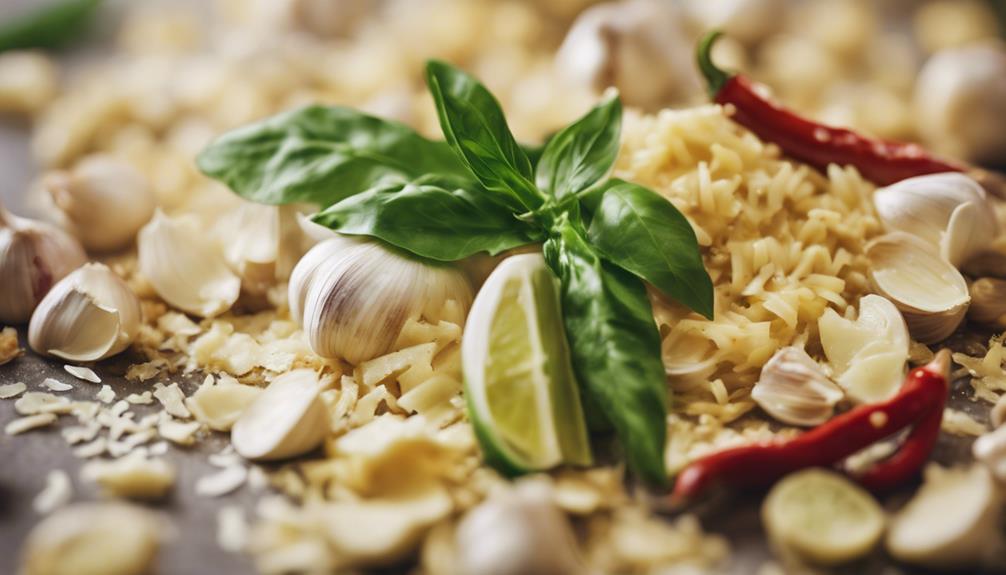
You can elevate the flavor of your garlic butter by trying out different herb combinations like rosemary, thyme, or basil.
Add a spicy twist to your garlic butter by tossing in some red pepper flakes or cayenne pepper for an extra kick.
For a cheesy and rich taste, consider mixing in grated Parmesan or Romano cheese into your garlic butter recipe.
Varieties of Garlic Butter
Among the varieties of garlic butter, you can explore classic garlic herb, roasted garlic, zesty garlic, and citrusy garlic for a range of unique flavor profiles in your dishes. Each variation offers a distinct taste that can elevate your meals.
Here are some details on each type:
- Classic Garlic Herb: This version combines the richness of butter with the aromatic flavors of garlic and assorted herbs, creating a versatile option for various dishes.
- Roasted Garlic: Known for its sweet and caramelized notes, roasted garlic butter is perfect for adding depth to savory recipes like roasted vegetables or grilled meats.
- Zesty Garlic: Infused with chili flakes or hot sauce, zesty garlic butter brings a fiery kick to your dishes, ideal for those who enjoy bold and vibrant flavors.
- Citrusy Garlic: The invigorating zest of lemon combined with the pungent garlic creates a lively butter that complements seafood, chicken, or even drizzled over fresh salads.
Alternative Flavor Combinations
To further enhance the versatility of your garlic butter, consider experimenting with alternative flavor combinations to create unique recipe variations that will delight your taste buds. Incorporating fresh herbs like rosemary, thyme, or oregano can add a new dimension to your garlic butter, infusing it with fragrant and earthy notes.
For a zesty twist, try adding a hint of lemon zest or juice to brighten up the garlic butter with an invigorating citrusy tang. Roasted garlic can also be a game-changer, bringing a milder and sweeter garlic flavor that complements the richness of butter beautifully.
If you're feeling bold, a sprinkle of red pepper flakes or a dash of cayenne pepper can provide a spicy kick to your garlic butter. Additionally, for a sweet and savory combination, consider drizzling in a touch of honey or maple syrup to elevate your garlic butter to the next level of deliciousness.
Experimenting with these alternative flavor combinations will take your garlic butter to new heights and transform your dishes into culinary masterpieces.
Feedback and Engagement

Encouraging interaction and participation from readers can elevate the discussion around the garlic butter recipe, fostering a vibrant community of culinary enthusiasts.
Here are some ways to boost feedback and engagement:
- Share a podcast episode discussing the best garlic butter recipe with adjusted measurements, inviting listeners to share their thoughts and experiences.
- Encourage reader responses and variations using different herbs to elevate the flavor profile of garlic butter, creating a dialogue on unique combinations.
- Highlight positive feedback on freezing and using garlic butter for convenient meal prep, showcasing efficient culinary tips that resonate with the audience.
- Spark a debate among readers on whether parsley or onion enhances the flavor of garlic butter more effectively, encouraging friendly discussions and diverse perspectives.
Supplies

When preparing the delectable garlic butter recipe, make sure you have the necessary supplies on hand to create a flavorful and versatile condiment. Essential ingredients for making garlic butter include 1 cup of unsalted butter, fresh garlic cloves, herbs, and salt. To achieve a smooth consistency in your garlic butter, using a food processor is highly recommended. Additionally, having proper storage containers such as airtight jars or containers is essential to maintain the freshness of your garlic butter. If you plan to make a larger batch, consider freezing portions of garlic butter in ice cube trays for convenient future use. Remember, the key to a delicious garlic butter lies in using high-quality ingredients and following precise measurements. Check out the table below for a quick overview of the supplies you'll need:
| Supplies | Quantity/Type |
|---|---|
| Unsalted Butter | 1 cup |
| Garlic Cloves | Fresh |
| Food Processor | For smooth texture |
Frequently Asked Questions
How Does Gordon Ramsay Make Garlic Butter?
To make garlic butter like Gordon Ramsay, blend softened butter with minced garlic, parsley, lemon zest, and seasonings. Use fresh ingredients for the best flavor. Let the butter sit at room temperature to meld flavors.
How Long Does Homemade Garlic Butter Last?
Homemade garlic butter can last in the refrigerator for up to one week. You should store it in an airtight container to maintain freshness. Freezing it in smaller portions, like in ice cube trays, allows for easy portioning.
Why Does Garlic Butter Taste so Good?
Garlic butter tastes delicious because garlic's oils infuse the butter with a savory, earthy flavor, creating depth and umami. The blend of garlic, herbs, and butter gives a rich and versatile flavor, making it a popular choice for enhancing dishes.
How to Make Garlic Butter Without Burning the Garlic?
To make garlic butter without burning the garlic, heat it on low to medium heat, stir constantly until golden brown, remove from heat promptly, and transfer to a cool surface. Being attentive is essential to avoid ruining the flavor.
Conclusion
Now that you have the best garlic butter recipe in your arsenal, you can elevate any dish with a burst of flavor!
Don't worry about the strong garlic taste – the butter mellows it out perfectly, creating a balanced and delicious addition to your meals.
So go ahead and whip up a batch of this versatile garlic butter, and watch your dishes transform into culinary masterpieces!
